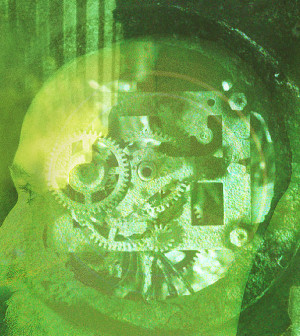- Navigating Your Midlife Crisis: Embracing New Possibilities
- City Raccoons Showing Signs of Domestication
- Mapping the Exposome: Science Broadens Focus to Environmental Disease Triggers
- One Week Less on Social Media Linked to Better Mental Health
- Your Brain Changes in Stages as You Age, Study Finds
- Some Suicide Victims Show No Typical Warning Signs, Study Finds
- ByHeart Formula Faces Lawsuits After Babies Sickened With Botulism
- Switch to Vegan Diet Could Cut Your Greenhouse Gas Emissions in Half
- Regular Bedtime Does Wonders for Blood Pressure
- Dining Alone Could Mean Worse Nutrition for Seniors
Screams Tap Into Brain’s Fear Response


What makes a bloodcurdling scream so, well, bloodcurdling? A new study says the answer lies not in the volume but the frequency range — one that’s shared by the shrill alarm sounds that startle people in everyday life.
“We show that screams and artificial alarm signals use a specific frequency range that is not used in speech and non-alarm signals,” said study lead author Luc Arnal, who conducted the research while he was a postdoctoral research associate at New York University.
“Sounds that contain these frequencies stimulate deep brain areas involved in danger processing and accelerate reactions to danger,” Arnal said.
The new research is unusual because scientists haven’t devoted much attention to screams, even though the sounds have a unique way of focusing the mind.
Arnal, who is now at the University of Geneva in Switzerland, said the study was inspired by a friend’s experience: “He told me that the sound of his newborn’s screams were literally hijacking his brain, and I wondered what makes screams so efficient as an alarm signal.”
Screams are unique for several reasons, Arnal said. “First, screams are important for our survival: If there’s a danger in your environment, one can scream to either ask for help or to inform people around that there is a life-threatening situation.”
Also, “it’s an innate communication signal,” he said. “The primal scream is the first vocal signal that newborn babies produce.”
And the scream is “a primitive and rudimentary mode of vocal communication,” Arnal said. “Many animals scream, which suggest that screams may be an ancestor of vocal communication.”
The research appears July 16 in the journal Current Biology.
Arnal and colleagues studied the audio makeup of screams and alarm sounds such as those of buzzers and car horns. “We recorded screams from volunteer screamers in the lab,” he said. “These people were not professional actors or screamers.” The researchers also downloaded various sound clips from the Internet.
They discovered that screams and alarm sounds share an audio trait known as “roughness.” Arnal said this “refers to how fast a sound changes in loudness. Normal speech patterns only have slow differences in loudness, but screams modulate very fast.” The phenomenon is similar to the rapid flashes of a strobe light, he said.
When the researchers asked people to rate how frightening a sound was, those that were higher in roughness were perceived as more frightening, the researchers found. Using functional MRI to check brain activity, the researchers also noted that sounds higher in roughness were linked to greater activation of the fear response in the part of the brain known as the amygdala.
Andrew Oxenham, a professor of psychology at the University of Minnesota who studies audio perception, said the new study “fills an important void” in research.
“We know that the feature of roughness in sounds is annoying, and it has been associated with musical dissonance,” said Oxenham, who wasn’t involved with the new research. “But this is the first study as far as I know to relate it to associations with alarm and fear. The authors do a thorough job of studying the acoustics, the perception, and the brain responses to this interesting and understudied class of sounds.”
Why does this research matter? Arnal said it could be used to improve the alarm sounds that alert us to hazards (and when it’s time to wake up) in normal life. In addition, he said, “tracking these frequencies in our acoustic environment may then contribute to reduce noise disturbance and the effects of noise stress on our health.”
Oxenham put it another way: The research could help develop alarm sounds like sirens “that are tailored to capture the maximum attention while still not being intrusively or dangerously loud.”
More information
For more about the brain’s processing of sound, try brainfacts.org.
Source: HealthDay
Copyright © 2025 HealthDay. All rights reserved.










